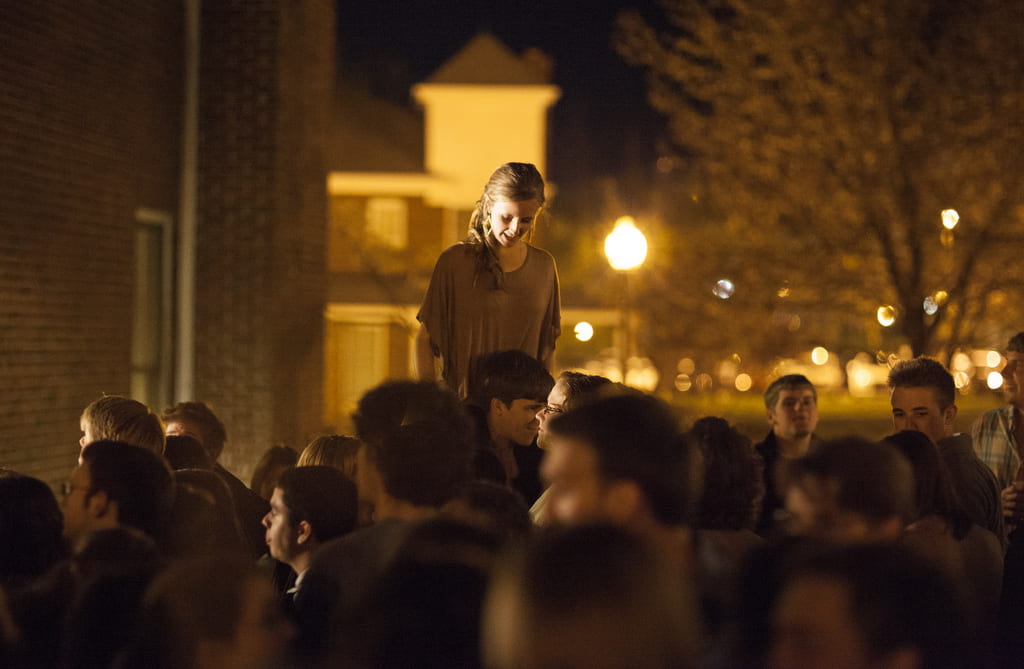By ALEC HUDSON – STAFF WRITER
Centre College’s social bubble is an enigma to anyone who interacts with it. With such a diverse range of student interests, activities, and preferences, it is hard to truly look at the Centre Bubble as a whole.
Luckily I’m a fan of National Geographic, which is the perfect source for clear scientific observation and analysis, and with that love of scientific inquisitiveness it only seems appropriate to relate Centre to an environment that strongly parallels it: the African savanna.

While it may seem like a farfetched comparison, if you go deeper into the analogy you can see striking patterns.
Firstly one has to consider the multitude of species; you have the clans of apes who are generally isolated with their own community, good with tools, and probably sitting in the basement of Olin in the Lennox-lab torrent-downloading Game of Thrones.
Next you have your great herds, the vast majority of wildebeests and antelopes who are just going about their day trying to reach their next goal, only to be exhausted from heat, work, and econometrics quizzes.
Then you have your go-getter, pumped up predators who work hard to excel at their hunting craft, later on panicking to their friends in the pride about the Fulbright interviews that are looming over their heads.
But it’s not only diversity that makes us so similar to our friends in the animal kingdom; it is also our social habits, namely our watering holes.
Oh yes, the great watering hole, where all can gather to replenish their spirits, catch up on current happenings, and be dragged off by observant crocodiles who need to cite you for drinking too much before dragging you under.
Of course not all watering holes are the same; some are perfectly safe for all species and individuals to congregate, and some are inhabited with testosterone-filled rhinoceros that may have an excessive appetite after experimenting too much at Hillside with beverages.
Either way, our watering holes are sacred to us, whether it is to freshen up with friends after a hard day of migrating or to satiate one’s lust for drink while grinding to Ke$ha.
Then you have your sometimes-inexplicable rituals and traditions that continue to baffle onlookers. While it is truly bizarre that female lions do all of the hunting, it’s even more bizarre that members of a species that treasures knowledge and reason would have any need to run around metal objects in the nude.
Further, it is even more bizarre when members of said species decide to destroy useful tools such as lampposts and couches while their primate cousins on the savanna use their tools to the fullest extent.
Then again, even elephants and monkeys are known to consume alcohol, and a few kegs worth at the houses may entice them to knock down some trees, throw objects at passers-by, and draw phallic symbols in the Nevin bathrooms.
But while we have seen the similar trends and habits to our cousins on the Serengeti, we still haven’t answered the question of why. Why do we treasure our watering holes so much, why do we streak around metal statues, and why do we sometimes feel the need to destroy perfectly innocent lampposts?
Perhaps those who ask these questions a lot need to sit back and enjoy the wonderful animalistic experience. After all, we are an ecosystem of sorts, and we rely on each other’s traits, whether they are unnoticeable or clearly bizarre.
Though if you figure out the reasons why you can let me know, otherwise I need to find a watering hole, but I can’t decide if I want to risk the crocs or experiment with the rhinos.
